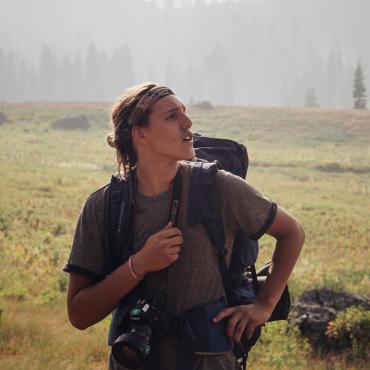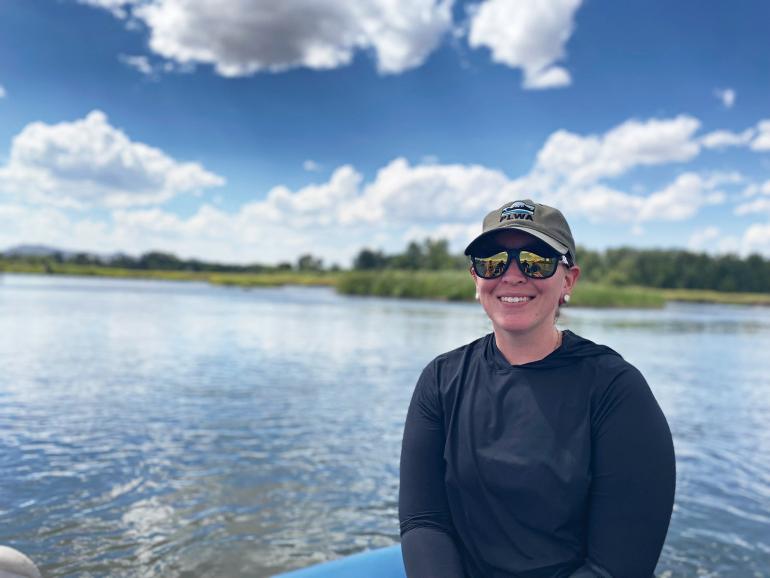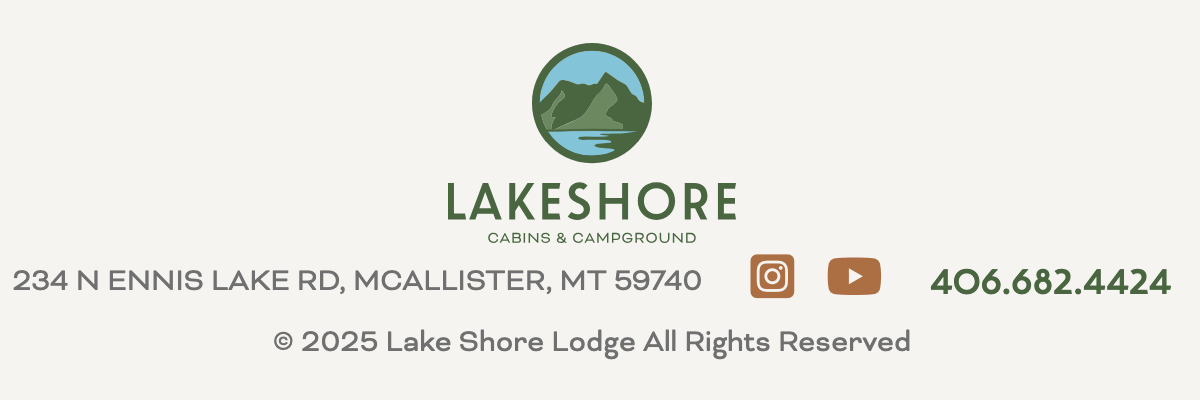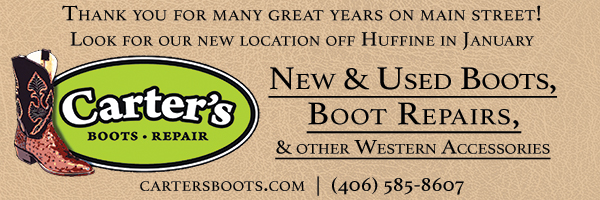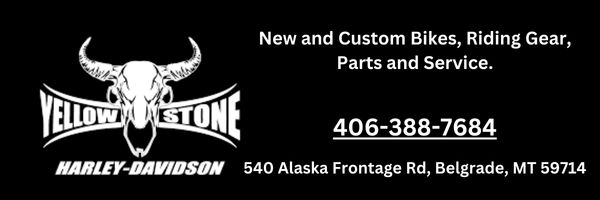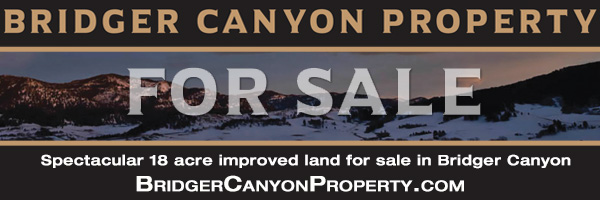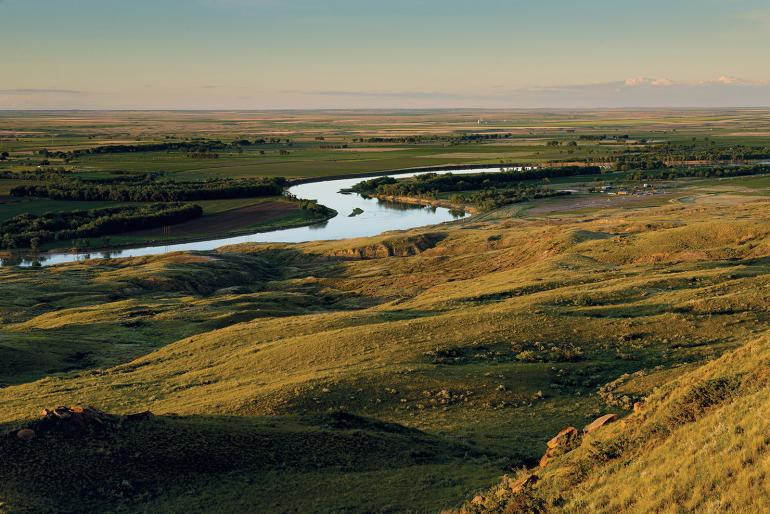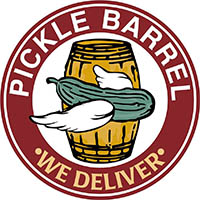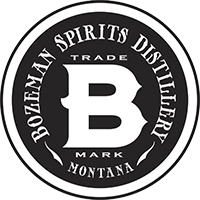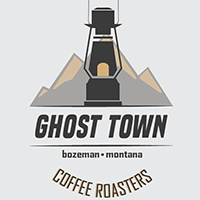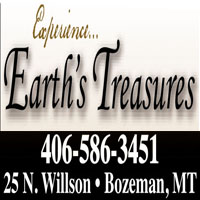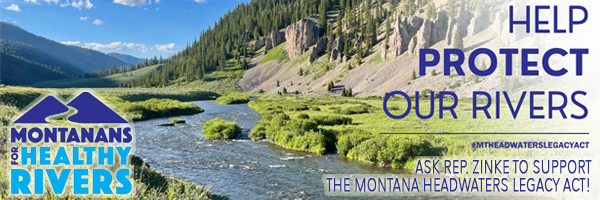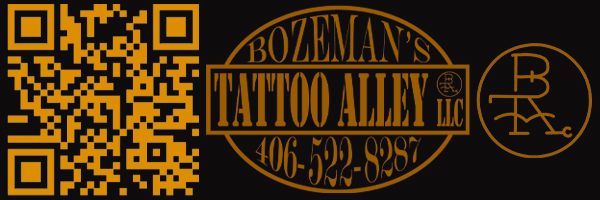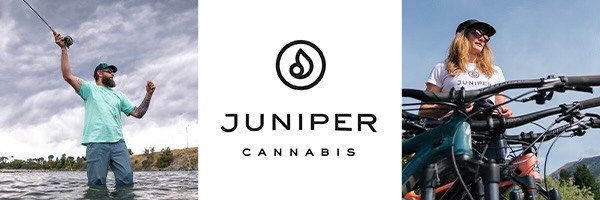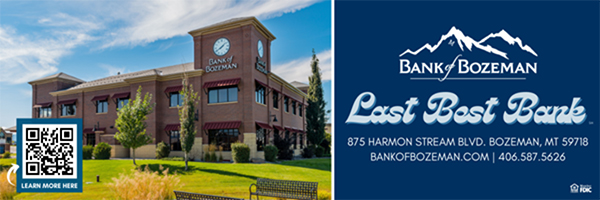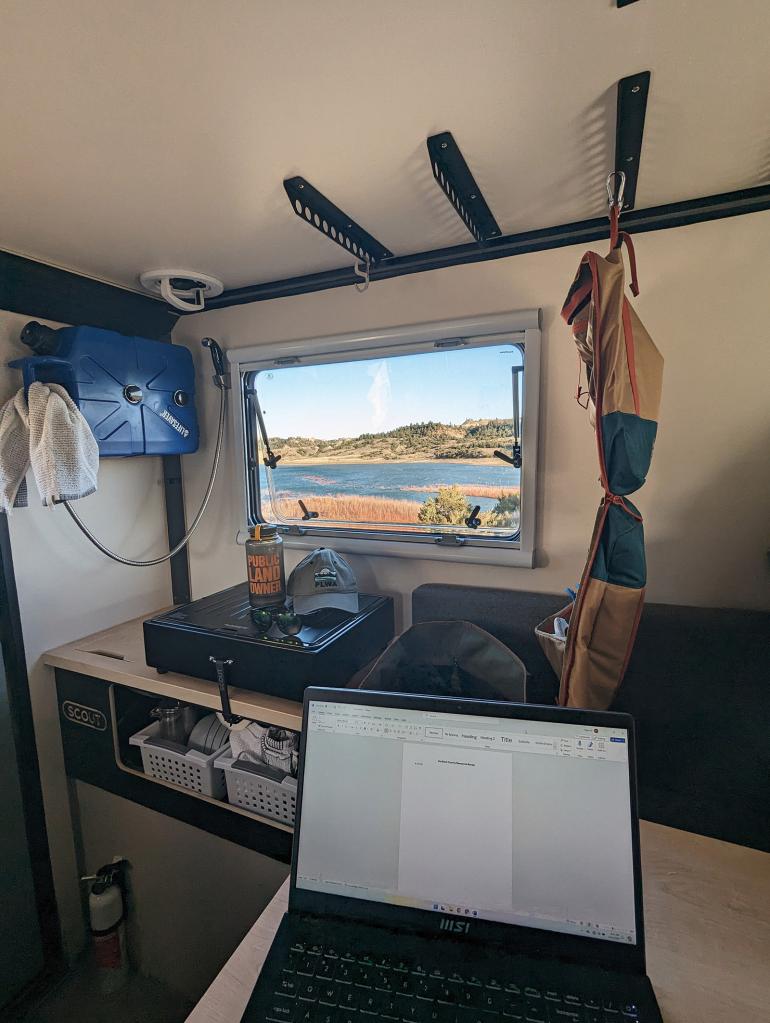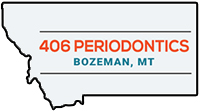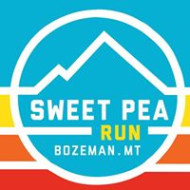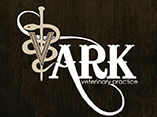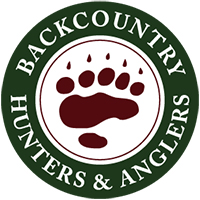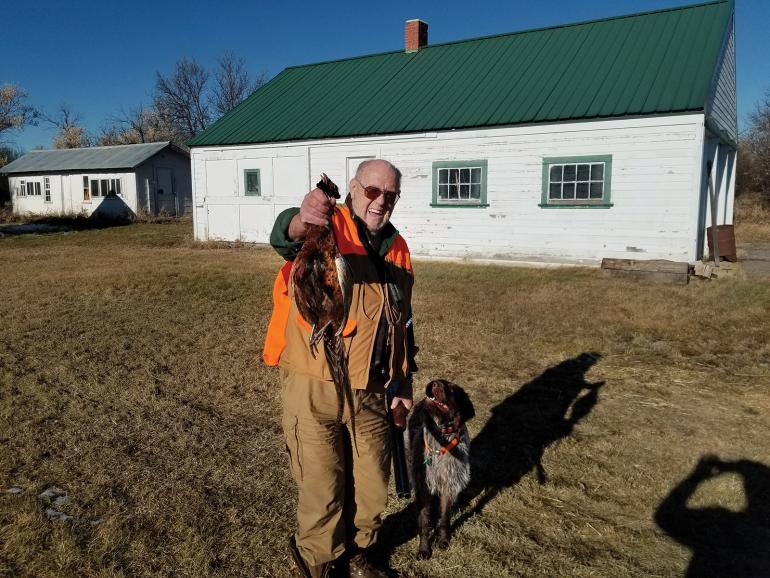No Stone Unturned
Haley Sir and PLWA investigate access issues in Montana.
It was a good day to be inside, a turbulent spring snowstorm having blown in to remind those hopeful for warm weather and fresh blooms that winter wasn’t done yet. Yet Haley Sir was braving the elements, driving straight into a wicked wind that rocked her camper as she barreled down the highway on a half-day trek from her home in Butte to the small town of Jordan in eastern Montana, just south of Fort Peck Reservoir. Haley would much rather have been safely indoors, but she was on a case.
Haley’s a detective of sorts, but she doesn’t deal with robberies, fraud, theft, or murder. As Director of Access Investigations for the Public Land & Water Access Association (PLWA), Haley looks into reports of public access—to our state’s rivers, lakes, BLM parcels, and other public lands—being wrongfully denied to Montanans. And she was driving six hours in a snowstorm because she got a tip.
Upon arriving in Jordan, Haley went to the city’s records office and spent hours poring over old documents as wind and snow lashed the windows.
Any time a recreationist makes an access complaint to PLWA, either by filling out their Access Issue Reporting System (AIRS) form online, submitting a complaint by email, or calling in, Haley’s the one who processes it. The complaints vary in nature—a landowner put up a gate on a public road; a nasty note was left on a car legally parked in an easement; a new fence obstructs a stream-access point—and Haley reviews each one to verify that it does in fact constitute a violation of public-access rights.
Early in the spring of 2024, Haley got word of a public road northwest of Jordan that was going to be abandoned by the county, meaning the landowner would take possession of the throughway and it would become private. If this happened, access to thousands of acres of rolling, grassy prairie, including prime hunting lands and proud stands of juniper, ponderosa pine, and Douglas fir, would be lost. As the county was moving quickly to abandon the road, there was no time to lose.
Upon arriving in Jordan, Haley went to the city’s records office and spent hours poring over old documents as wind and snow lashed the windows. She snapped photos, scanned pages, and deciphered looping cursive from documents dating back to the 1800s, looking for anything that established or confirmed the public’s access to that road. That night she parked near the edge of Fort Peck Reservoir and gritted her teeth as the wind whipped against her camper, wondering if it would topple over the cliff and into the water. The next morning, she was back in the records office looking for more evidence.
While carrying out investigations like this one, Haley looks for any record of public access granted in the past. If she can’t prove legal, documented public access, she’ll try to prove prescriptive access, meaning that hunters, anglers, or hikers have used the land in the past through an informal agreement with the landowner or the county.
Once in possession of evidence, Haley seeks out the agency, such as the county or Montana Fish, Wildlife & Parks (FWP), with jurisdiction over that particular area and legal authority to defend public access. Sometimes the agency takes over the case, but other times—if a county office is understaffed or FWP deems the issue not sufficiently important—PLWA takes matters into their own hands, rallying community support to draw attention to an issue and even taking landowners to court (PLWA is currently seeking more legal counsel and support).
Public-access rights are robust in Montana, but they’re not invulnerable.
For almost 40 years, PLWA has been dedicated to preserving the public’s land and water access in Montana, and in addition to their access-investigation program, they have an education and outreach component to inform both public-land users and private landowners of Montana’s access laws, which are extensive.
A fleet of laws, codes, and statutes exist in Montana to safeguard the public’s right to recreate—hunt, bike, hike, fish, etc.—on its public lands and waters. These codes, like 1985’s landmark Stream Access Law (which allows the public to use all rivers and streams within the high-water mark), afford Montana residents more access rights than most states, and with an abundance of outdoor opportunities, it’s an ideal home for anyone who likes to get outside.
“Going from Jordan, Montana to the Bitterroots, it’s just totally different terrain, and to be able to enjoy all that and recreate on such a wide range of public lands and waters... it’s not something that many people who live in other areas get to experience,” Haley points out. “I think it’s important for all of us.”
Public-access rights are robust in Montana, but they’re not invulnerable. Though individual complaints received by PLWA can appear trivial—say, the loss of one access route to a swath of BLM land where other access points exist—their consequences can be far-ranging.
“If we said, okay, this isn’t the most accessed point to these public lands so let’s just get rid of it, and we did that all across the state, we would lose a vast amount of access,” Haley says.
This gradual loss of access would be death by a thousand cuts. Individual cases are also important because they can establish precedent for future access issues. In 2003, for example, out-of-state billionaire landowner James Cox Kennedy tried to stop the public from entering the Ruby River on his property. He put up fences, including electric fences, at three public road bridges, angering anglers and floaters who brought the issue to PLWA’s attention. PLWA then sued Kennedy, and the case made it all the way to the Montana Supreme Court, who ruled in PLWA’s favor, preserving the public’s access rights on the Ruby River and upholding rights enumerated in the 1985 Stream Access Law.
Haley, who grew up in northern Michigan, moved to Montana in part because of that same stream-access law. She’s an avid angler who also loves to camp and hike, and takes pride in defending the access she so often enjoys. “When the opportunity arose to work for an organization like PLWA, I had to jump at it,” she says. “This is one of the things I’ve been most passionate about my whole life.”
Yet with the efforts of some to deny people their legal access, the job can be difficult. “It’s an incredible privilege, but also can be incredibly frustrating at times,” Haley notes. “It’s hard to not get bogged down in the number of access issues we’re seeing.”
Access to public lands and waters has always been contentious, but more people are moving to Montana, and Haley says that many either don’t understand or don’t respect our unique access laws. Much of the access afforded to Montanans in the past was in the form of handshake agreements between landowners and recreationists. But when new landowners come in who don’t respect the tradition of goodwill access, it can vanish quickly.
Access to public lands and waters has always been contentious, but more people are moving to Montana, and Haley says that many either don’t understand or don’t respect our unique access laws.
Haley has seen a rise in complaints about river access, in part due to misunderstandings around the high-water mark, and there is ongoing confusion about easement laws—some landowners maintain that ingress and egress rights on roads only allow recreational users to travel them on their way to and from public lands, not to park on those roads and bike, run, or walk along them. PLWA currently has over 40 access issues they’re working to resolve, including excessive fencing on the Big Hole River, and the Crazy Mountain Land Exchange—a divisive land swap between the Forest Service and a group of private landowners that includes the Yellowstone Club.
The volume of access issues can be daunting, but according to Haley, one of the most effective ways to fight back is through community action. “PLWA can’t do what we do by ourselves,” she says, “and I think that’s really telling on some of our bigger wins.”
In 2020, Madison County provided an example of community action at work. There’s a strong access community there, and it was the determination of its members, in conjunction with PLWA, that fought back against landowners who denied public access on County Road 71. After landowners posted “Private Property” and “No Trespassing” signs and installed a locked gate across a road providing important access to BLM lands, the community sprang into action. They contacted PLWA, made Facebook groups, posted it in the news, and when a public meeting was held to address the issue, hundreds of people showed up, forcing the county commissioners to change the location to fit everyone inside. “I attended that meeting in person and it was incredible to see the outcry of everybody—on both sides, I’ll say—that wanted to get involved,” Haley remembers.
The county capitulated, declaring the road public in 2021, perfecting public access—but the story didn’t end there. In 2022, Haley received reports of the landowners illegally constructing another gate on the road, and PLWA is monitoring the case. As Haley points out, safeguarding public access requires constant vigilance.
Haley wants to promote good relations and better understanding between private landowners and public land users, and she encourages recreationists to know their rights, be respectful, and leave the land as they found it to preserve goodwill access.
PLWA encourages citizens to report access violations to them, either through the AIRS form on their website or the new AIRS app, which they launched in June of 2024. To use it, a recreationist need only turn on his or her phone’s location finder, take a few photos of the transgression, and provide some basic data before submitting the complaint. With the introduction of AIRS, Haley has seen more access complaints coming in, and she hopes they will continue to help raise awareness.
Although PLWA advocates for the rights of public landowners, Haley says it’s essential to understand the perspectives on both sides. “We’re not trying scoop up private land and put it in public landowners’ possession. We just want public land and public landowners’ rights to be respected just as much as those of private landowners.”
Haley wants to promote good relations and better understanding between private landowners and public land users, and she encourages recreationists to know their rights, be respectful, and leave the land as they found it to preserve goodwill access. But there is often an imbalance of power, and PLWA is there to provide a counterweight.
“If an illegal fence went up on a private piece of property, you can bet your bottom that it would get taken down immediately, or as soon as possible,” she says. “However, when a gate gets erected on a public road, why does that take sometimes months or years to address?”
That’s where Haley and PLWA come in. They make sure these violations don’t go unnoticed, protecting and fortifying the rights that Montanans cherish and that will hopefully enjoy for decades to come.
The drive back to Butte was treacherous. The storm persisted, and after two days in Jordan with her nose deep in dusty records, Haley made the long journey home, stopping for a night in Livingston and waking up to one last load of fresh now.
Despite the evidence she was able to collect, the fate of Seven Blackfoot Road is uncertain. Haley doesn’t yet know whether public access there will be secured, or if it will be turned over to private landowners and perhaps lost for good. But she, along with everyone else at PLWA, is working on it. It’s still an open case.
PLWA always appreciates community support. Interested citizens can become sponsors, Access Ambassadors, or support the PLWA mission by reporting violations of our public-access rights. To learn more, visit plwa.org.
Success Stories
While we’re quick to jump on access violations and landowners in the wrong, we mustn’t forget about past success stories—instances where a trailhead or county road remained open, thanks to the work of PLWA and other organizations or people fighting on the public’s behalf. Here are a few historical wins in southwest Montana.
SOUTH COTTONWOOD CANYON
A classic destination for Bozemanites looking to ski, hike, run, or mountain bike, South Cottonwood was illegally closed by a landowner for over 20 years until a PLWA member who held a cabin permit in the area brought attention to the issue. In 1983, a district judge ruled that Cottonwood Canyon Road was a prescriptive easement right of access, and eventually the area was permanently re-opened to the public.
SEYLER LANE
The Seyler Lane saga began in 2003, when billionaire business mogul James Cox Kennedy restricted access to the Ruby River by erecting barbed-wire and electric fences at county-road bridges. PLWA filed the initial lawsuit against Madison County for its failure to act against Kennedy, and they saw the case through to the end—ten years and several lawsuits later, Kennedy was told by the Montana Supreme Court that his case “didn’t hold water,” and Montanans not only regained access at Seyler Lane, but were guaranteed public-road bridge access to all the state’s rivers and streams.
HUGHES CREEK ROAD
Some people just don’t know when to quit. In 2019, PLWA, along with the Ravalli County Fish & Wildlife Association and the Goetz law firm, secured a public-road designation for Hughes Creek Road from the Montana Supreme Court, leading to the removal of a gate blocking access there. But the intractable landowners built another one, and once compelled to remove that gate in 2021, built yet another. The road was finally cleared in 2022 and is now open to the public, but PLWA is monitoring the situation to make sure the landowners don’t erect another roadblock.
A Closer Look at the AIRS App
Phones usually detract from the outdoor experience, but PLWA’s Access Issue Reporting System (AIRS) app provides a rare exception to the rule. In June of 2024, the organization released the mobile version of their reporting tool, making it even easier for people call out violations of their public-access rights while recreating. Run into a gate on what appears to be a public road, or a piece of barbed wire blocking the path to your favorite fishing hole? Just open the app, turn on your phone’s location finder, snap a couple photos, provide some basic information, and log your complaint. Then you’ll have Haley Sir, Public Land Detective, on the case.
RIP: John Gibson
by Ray Pearson
John R. Gibson, longtime president of PLWA, passed away on May 29, 2024 at age 92 after a long life spent defending public lands.
John grew up on a subsistence homestead in the Klamath National Forest during the 1930s and ’40s—hunting, fishing, logging, placer mining, and even generating hydroelectricity for lighting and the radio. He served in the US Army, and after his discharge, returned to the Klamath country and looked up a pretty young woman that had been on his mind during his service. Carol was intrigued by the young man who sang to her on their first date. They married soon after Carol graduated from college.
They moved to Alaska, then to Missoula, Montana so John could attend the UM School of Forestry. He joined the Forest Service after graduation and Carol taught school while they raised their three girls Jill, Shawn, and Teal; John, meanwhile, hunting and fishing as much as he could.
They eventually retired to Billings, where Carol served in the Montana State Legislature. There, John and his friend of 50 years, Bernard Lea, joined the organization that evolved into PLWA, sharing leadership between them for over a decade. John and Carol were inducted together into the Montana Outdoor Hall of Fame in 2020.
John had a passion for the public domain and was willing to take on any threat to it. I think his final message to us, in his deep booming baritone, would be, “Carry on!”


